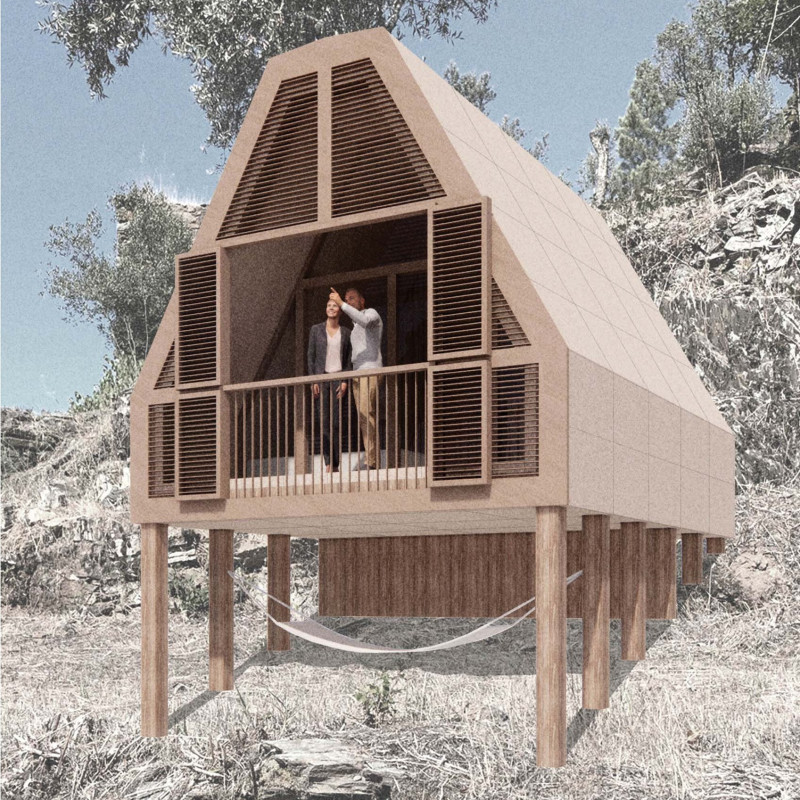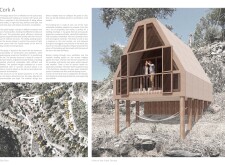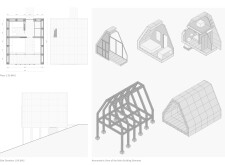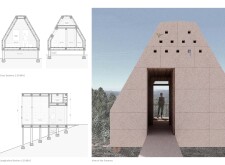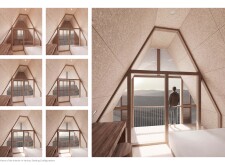5 key facts about this project
Cork A is a contemporary architectural project that embodies a sustainable design ethos while providing a versatile living environment. Focused on integrating with its surrounding landscape, this architecture project utilizes environmentally friendly materials and innovative design strategies. The project emphasizes a strong connection between indoor and outdoor spaces, enabling occupants to experience their environment fully.
The structure features a distinctive A-frame design that optimizes both aesthetic appeal and functionality. This approach allows for efficient use of space, with a modular layout designed to accommodate varying living arrangements. The incorporation of large windows and operable louvers highlights the relationship with nature, allowing natural light to permeate the interior while providing effective ventilation.
Sustainable Material Choices
One of the defining features of Cork A is its resolution to prioritize sustainability through material selection. The primary material, cork, is celebrated for its thermal insulation properties and eco-friendliness. The choice of glued laminated timber enhances structural integrity while maintaining an overall lightweight design. Concrete is used sparingly for foundational elements, contributing to minimal environmental disruption.
Unique aspects of the project include the flexible living areas that can adapt to different user needs. The innovative shading configurations provide adaptability, allowing inhabitants to control light and reduce energy consumption effectively. This design approach stands out among conventional projects by not only meeting functional needs but also promoting user engagement with the surrounding landscape.
Integration with Nature
Cork A’s design thoughtfully incorporates outdoor living spaces, with balcony terraces enhancing the connection with nature. The elevated structure minimizes site disruption and preserves vegetation beneath. Furthermore, features such as birdhouses integrated into the façade reflect a commitment to promoting biodiversity. The project’s configuration encourages harmonization with its environment, allowing users to foster a sense of community while enjoying personal privacy.
Cork A demonstrates a comprehensive architectural approach that balances functionality with sustainability. The project showcases modular adaptability, ecological materiality, and an intrinsic link to nature. For further insights into the project’s architectural plans, sections, and overall design ideas, readers are encouraged to explore the detailed presentation of the project.


